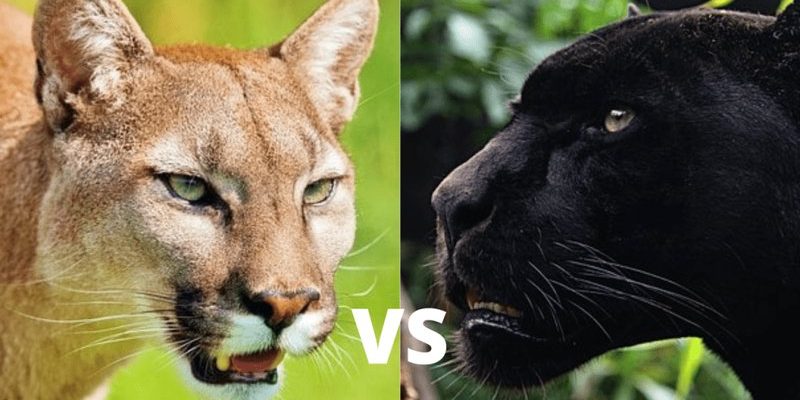![Comparing The Panther Vs. [Similar Species]](https://gudri.com/wp-content/uploads/2025/06/Comparing_The_Panther_Vs___Similar_Species__image_0.jpg)
You might picture a sleek black panther gliding through the moonlit jungle, a shadow against the night. Now, contrast that with the spotted coat of a leopard lounging in a tree, blending seamlessly into its surroundings. The panther, often referred to as the black leopard, has its own charm, but both species have some remarkable traits and adaptations that make them stand out. So, let’s explore their similarities and differences, and maybe you’ll find your favorite by the end!
Physical Appearance
When it comes to physical traits, panthers and leopards show us the beauty of nature’s design. Leopards are known for their distinct rosette-patterned coats, which serve as excellent camouflage in their natural habitats. These spots help them blend into the foliage, making it easier for them to stalk prey. The coloration varies from a golden-yellow to a chocolate brown, depending on their environment.
On the other hand, panthers, specifically black panthers, are actually leopards with a genetic mutation that causes their fur to be black. This doesn’t mean they lose their spots, though! If you look closely, you can still see the faint rosettes on their coats shimmering under the right light. So, in terms of color, panthers are just leopards with a stylish twist, making them appear more mysterious, like a shadow crossing the jungle floor.
Habitat and Distribution
You might wonder where you’d find these incredible animals in the wild. Leopards are quite adaptable and are found throughout Africa and parts of Asia. They thrive in various environments, from savannas to rainforests. This adaptability allows them to live in a range of habitats, making them one of the most successful big cats.
Panthers, however, are not a separate species but rather a term often used to describe black leopards and sometimes black cougars. Most black leopards are found in the dense rainforests of Southeast Asia, particularly in places like India and Malaysia. Their choice of habitat is influenced by their need for cover while hunting. This specific lifestyle means you’re more likely to see a panther in a tropical rainforest, while leopards can adapt to open fields and urban areas alike.
Behavioral Traits
Let’s talk about how these cats behave. Leopards are solitary creatures, preferring to dine alone after a hunt. They’re known for their skill in climbing trees, where they often stash their kills to prevent other predators from stealing their meals. They’re stealthy and patient, often waiting for the perfect moment to pounce, exhibiting a blend of grace and ferocity.
Panthers share many of these behaviors, reflecting their leopard lineage. They’re also solitary hunters and excel at climbing. However, due to their darker coats, panthers might use different strategies. They tend to hunt during the night, relying on their stealth to close in on prey in the dark. This nocturnal lifestyle adds an element of intrigue, as they move silently like shadows through the underbrush, with the majestic ability to hunt in total darkness.
Diet and Hunting Techniques
Now, let’s dig into their eating habits. Both panthers and leopards are carnivorous, primarily feasting on ungulates, rodents, and birds. Leopards are opportunistic eaters and will adapt their diet based on availability. If they’re in a region with plenty of small deer, for instance, you can find them actively hunting those animals.
Panthers follow a similar diet but may rely more on smaller animals due to their specific habitats. They’re known to be stealthy and will often stalk their prey patiently before making a sudden dash. What’s fascinating is that both species can tolerate a range of prey sizes, showing just how adaptable they are.
Conservation Status
In the wild, both the leopard and its black counterpart face various challenges. Leopards are classified as “Vulnerable” on the IUCN Red List, primarily due to habitat loss and poaching. Deforestation and expanding human settlements have led to a decrease in their populations, making conservation efforts crucial for their survival.
Panthers, while not a distinct species, face similar threats. The black leopard population is part of the broader leopard conservation efforts. Protecting their habitats is vital, as these leopards are often misunderstood and face stigmas due to their unique appearance. Conservation programs aim to raise awareness of these incredible animals and the importance of maintaining biodiversity in their ecosystems.
Cultural Significance and Myths
Both the panther and the leopard have made a significant mark in various cultures. Leopards are often featured in folklore and art due to their unique patterns and impressive hunting skills. They symbolize strength and independence in many cultures, making them an iconic figure in storytelling.
Panthers, on the other hand, often carry an air of mystery. In some cultures, they are seen as protectors and symbols of courage. Their black coat has led to various myths surrounding them, often being associated with the supernatural or as symbols of transformation and power. This cultural significance adds layers to their identity beyond just being magnificent animals.
As we wrap up our comparison of the panther and leopard, it’s clear that both species are remarkable in their own right. Whether you’re drawn to the sleek black panther with its mysterious allure or the spotted leopard with its adaptable nature, there’s something captivating about each of them. Understanding their similarities and differences enriches our appreciation for wildlife and highlights the importance of conservation efforts.
So, the next time you hear about these magnificent creatures, remember the role they play in our ecosystems and the beauty they bring to our world. Here’s the thing: every time we protect their habitats, we’re also preserving the stories and cultures intertwined with them. Let’s celebrate these incredible cats and keep the conversation going about their conservation and importance in nature.

